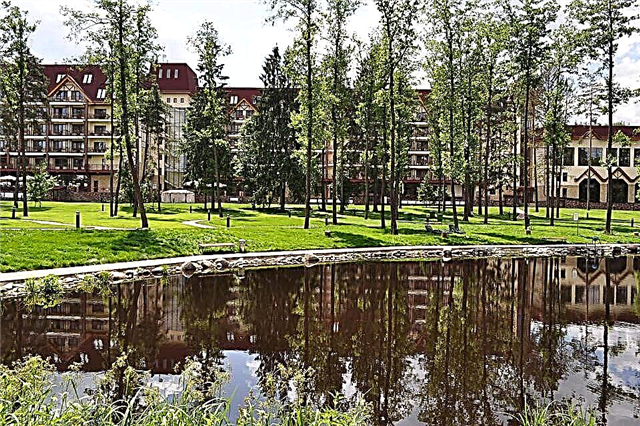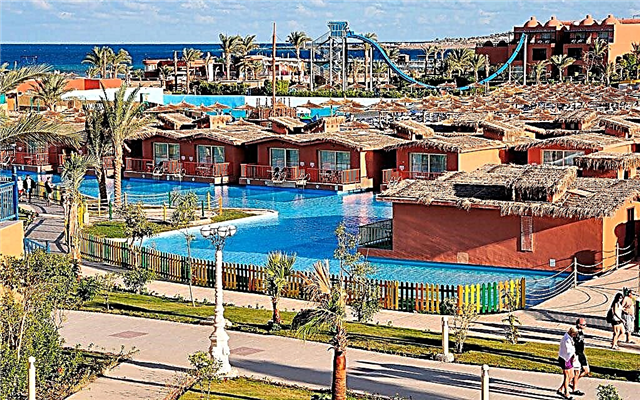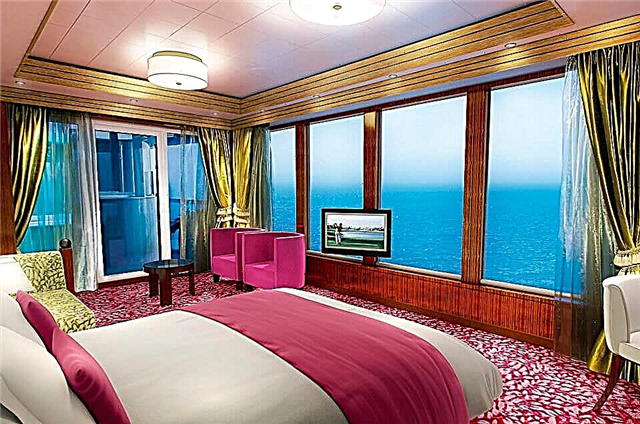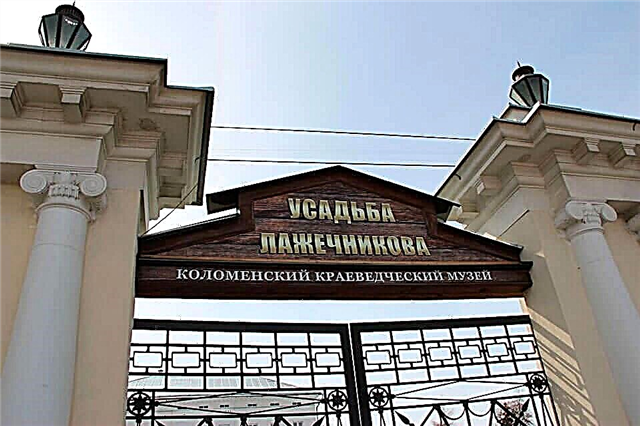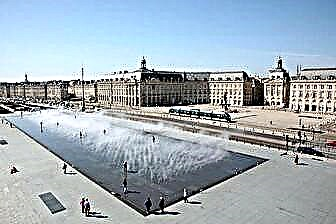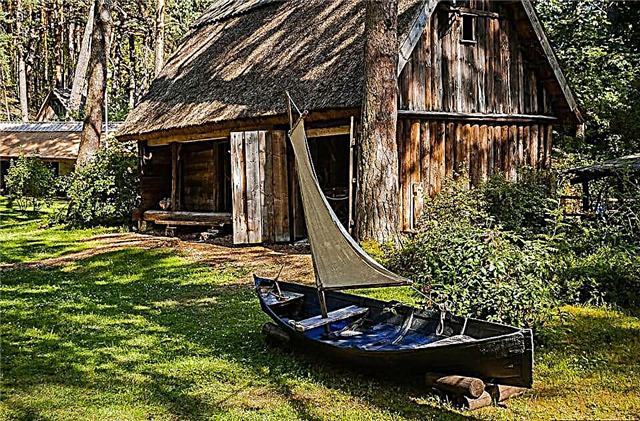Fishing villages were located on the territory of the modern resort town on the shores of the Gulf of Riga until the 18th-19th centuries. The settlements gradually changed their status. In 1920 they were united into the city of Rizhskoe Vzmorie ("Rizhskaya Jurmala"). After 29 years, it became a separate area of the capital of Latvia. In 1952 Jurmala regained the status of a city, where over 50 thousand people live today. The activities of the townspeople are mainly associated with tourism, the sanatorium-resort sphere. Many sights of Jurmala are notable for their difficult fate. If Riga is the heart of Latvia, Jurmala is one of the manifestations of the soul of the Latvian people: restrained, proud, reasonable.
Dzintari Forest Park

In the center of the resort, not far from the beach, there is an evergreen forest park "Dzintari" - a beautiful place where you can relax with your family or friends. A 200-year-old pine grove is of particular value. For the convenience of visitors, smooth and wide paths are laid throughout the territory. This is a very calm and quiet place - no noisy music, an abundance of restaurants, barbecue and other outlets. There is a small cafe that offers delicious pastries or ice cream, a cup of coffee or a soft drink.
The park area is equipped with places for active recreation - interesting playgrounds. Children of any age will find something to do - the smallest prefer swings or trampolines, while older ones climb rope mazes or ride electric cars and roller skates. Above the entire park there is a tower with an observation deck at the very top, from which the coniferous forest, dunes and the sea are perfectly visible. The construction of the tower is interesting - it sways, especially in windy weather, considering that the structure is lattice, it can be scary.
Jomas street

Jomas Street is located in the center and is the oldest on the seaside, known since the end of the 19th century. Now it is a lively place with souvenir shops, a market, pharmacies, cafeterias and hotels. The appearance of Jomas changed several times - fires and wars contributed to this. Wooden houses burned or were destroyed during the wars, as a result new beautiful buildings appeared. Currently, one of its edges overlooks the Majori railway station, on the other side, one of the attractions of the resort - the globe.
The street is for pedestrians only. Especially a lot of people in the summer - a wonderful sea climate, coniferous forest, excellent cuisine, clean air make the resort attractive for visitors. Locals annually organize a festival of Jomas street, on this day they hold exciting contests and attractions, organize concerts and other interesting events.
Holiday complex Kristapa and Augusta Morberg

Vacationers will certainly be interested in the summer residence of the construction magnate Kristaps Morberg and his wife. A peculiar wooden structure was erected according to the design of Morberg himself in the neo-Gothic style. The construction of the mansion began in 1883, the project was changed over several years, in total, construction lasted more than thirty years. The result is a residence of amazing architecture.
Serrated turrets with weather vane, colorful stained-glass windows and openwork terraces give the structure a graceful weightlessness, making it look like a castle from a children's fairy tale. Mr. Kristaps loved to experiment and embodied fantasies in his brainchild, in particular, he brought the pipes of the house inside to water the greenhouse plants with rainwater. Morberga's house was bequeathed to the University of Latvia. The mansion was recently restored, recreating the previous appearance of the interior and facade.
Jurmala Open Air Museum

Once upon a time there was an ordinary fishing village on this territory: men caught and smoked fish, women did housework. It was decided to equip the exposition on the site of the settlement in 1970. Boats, smokehouses, nets, anchors, fishing houses, everything that the inhabitants used, began to be brought from all over Latvia.
The management of the complex organized interesting and informative excursions, where they not only show dwellings and tools. Here they will teach you how to repair nets and tie a sea knot, offer to taste freshly cooked smoked fish and listen to folk songs of Latvians. All items of the museum, right down to the huts, are original; they were used by fishermen and their family members.
Tuesday - Sunday from 10:00 to 17:00. The entrance is free. Located in Dubulti area.
House-Museum of Aspazia

Aspazija is a famous Latvian poetess, wife of poet and public figure Jan Rainis. After the death of her husband, the widow decided to leave Riga, and in 1933 she acquired a small mansion in the small town of Dubulti. The blue building is decorated with azure carvings. During the life of the hostess, guests often gathered here - writers, literary men, artists and other creative people. In 1943, the poetess died, and since there were no heirs left, the house passed into the ownership of the local government. Every summer vacationers lived here who did not care about Aspazia's legacy.
In 1990, a group of enthusiasts decided to reconstruct the building, using documentary materials and testimonies of people, old photographs were found. They collected the clothes of those times, furniture, household items and in 1996 they opened the Museum of Aspazia. A surprisingly warm atmosphere of the old life is created in the room - calm music plays, people read Aspazia's poems in her native language, during excursions tea parties are arranged. A large room on the ground floor serves as an exhibition hall - paintings, sculptures and photographs are displayed.
Working hours: from 11:00 to 18:00, Tue-Sat - days off. How to get there: fixed-route taxi No. 7021, 7023 to the Dubulti stop from the Riga railway station.
Globe of Jurmala

The largest globe in the country with the inscription "Jurmala" is located at the intersection of Jomas and Turaidas streets. The globe is made of copper plates, fixed on a steel frame, installed on a low pedestal. The structure weighs almost a ton. The construction of the monument began in the late 60s, and was restored in 2003. In 2015, during work, the globe was accidentally damaged by construction equipment.
It was decided to dismantle it and carry out a complete overhaul, during which the electrics were replaced, a rotation mechanism was installed. In the evening, lights are lit on the site of the world's capitals and it can spin like a real globe. This is a popular place where lovers meet; tourists love to take pictures against it.
Turtle sculpture

On the seashore, next to the sea pavilion, a bronze monument was erected in 1995 depicting a turtle by the famous Latvian sculptor Janis Barda. There are several opinions as to why the turtle, an uncharacteristic animal for these places, is installed near the beach. According to one version - as a symbol of longevity, according to the other - talking about the leisurely life of the resort. According to the third, the turtle just decided to swim in the cool waters of the sea. Each guest takes a photo with the animal, now it has become a tradition. Another tradition is to rub the turtle's head, then any desire will come true. Located in Majori, from the railway station along Atra street.
Ragakapa Natural Park

You should definitely take a walk in the Ragakapa park, located in one of the districts of the resort town - Lielupe. It is not crowded here and people tired of noisy cities can relax in peace and quiet. "Ragakapa" is a place where a large number of relict three-hundred-year-old trees are concentrated. Among the attractions are the highest (up to 18 m) and widest (18 m) dunes in Latvia.Such a picture can be observed along the coast - this fascinating sight delights everyone.
On the territory of the park zone, in addition to pines, there are other rare trees, as well as animals, which are becoming less and less on Earth. For visitors, there are convenient ecological paths with names, for example, "Natural" or "Insect Trail". Since the forest is located on the dunes, the paths and steps on the ascents and descents will help both children and people with disabilities easily move around. The highest points are equipped with observation platforms. So that tourists do not get lost - signs are installed everywhere.
Getting to the park from the city is easy - walking along the coast from the beach in Majori.
Dzintari Concert Hall

In 1897, a stage was erected in the city, called the "Concert Garden of the Kurhaus Edinburgh". Modern auditorium "Dzintari" in 1962 by architect Modris Gelzis. The structure has no walls - only a roof, it can accommodate up to 2000 spectators. “Dzintari” was reconstructed in 2006 - the stage was renewed, it became five-level and is suitable for performances of both brass and symphony orchestras. Replaced acoustic systems, installed infrared heaters and soft, comfortable seats for spectators.
The Dzintari complex also has a small hall, a small heated wooden building that can accommodate 500 people. Built in 1936 by architects Alexander Birznieks and Viktor Mellenbergs. It is currently recognized as an architectural monument. It was reconstructed in 2012, expanding its capacity to six hundred spectators. Most of all festivals and concerts in Latvia are now held in the concert hall. The hall is located a hundred meters from the bay, in the city center. Electric trains run from Riga, stop - "Dzintari".
Kemeri National Park

Kemeri Park is a protected forest with a picturesque swampy area. The flora and fauna of the national park is very rich. It is convenient to observe birds nesting in swamps from specially equipped areas. A little further away there is a black alder forest - it is unique, in Europe there is almost no such vegetation left. The fabulous appearance is created by the vines and hazel branches hanging from the trees, which form an arch high above the ground.
The territory is divided into conditional zones, only two are open for visiting, tourists are not allowed into the specially protected area - this is done to preserve the unique nature. On one side of the park there are beautiful sandy beaches, picturesque and bizarre outlines of the dunes. Of interest are the mineral springs, decorated with images of a toad and a lizard, which were established here more than a hundred years ago. For the convenience and safety of guests, the area is equipped with all kinds of paths and bridges.
From the center can be reached by minibus number 10.
Jurmala City Museum

The City Museum was founded in 1962; the exposition presents the history of the resort town from the beginning of the 19th century. The museum's collection includes almost 50,000 items that tell about the life of this place - finds raised by marine archaeologists from the bottom of the sea, a wide collection of beach bathing suits, old postcards, paintings by local artists. The exhibition “Ships in the Abyss” tells about the development of shipping in the country - it introduces different types of ships, submarines and schooners.
Another exposition is about the history of the Riga seaside resorts and the life of vacationers. About how the sanatorium and medical industry developed, how its health-improving qualities affect a person, about the climatic resources of the coast. The exhibition introduces the Kemeri balneological sanatoriums, the peculiarities of the coastal climate.
Guests can learn from old photographs how the streets of the resort used to look, what buildings have survived to this day and what fashionistas preferred to wear in the century before last, about the interiors of living quarters: original furniture, dishes and other household items are presented. It tells about the cultural life in the city - festivals of folk and classical music, festive concerts, and other events.
How to get there: by fixed-route taxis from Riga №7021, 7023 to the stop "Dubulti".
White dune in Lielupe

On the territory of the Baltic States there are several attractions with a similar name. The emergence of this unique natural monument dates back to 1757. Numerous tourists are attracted by the opportunity to see magnificent landscapes from the height of the dune. Not far from it are the Ragakapa nature park and the Priedaine summer cottage area, where travelers stay in guest houses. The latter is interesting for its buildings of the 18th-19th centuries and a railway station in the style of functionalism (built in the 20th century).
The Lielupe River, which has more than 250 tributaries, has repeatedly changed its course due to ice jams during spring floods. The White Dune was formed as a result of this phenomenon. At the place where the river flowed, there is a hill 17 meters high. The hardened white sand of the dune looks like sandstone. According to scientists: it is doomed to disappear. The dune is destroyed by wind and rain. To save the landmark, local residents use garbage to strengthen it, plant bushes and trees on the slopes of the hill. These measures slow down the erosion process, but do not stop it.
Aquapark "Livu"

The entertainment complex was opened in 2003, it is recognized as one of the largest water parks in Eastern Europe and the Baltic States. Over 16 million euros were spent on the construction of the facility. Up to 300 thousand guests visit it annually. In the center of the water park there is a three-story building and a 25-meter tower. The authors of the project and the builders of the entertainment center managed to create a tropical paradise on the banks of the Lielupe River. On the territory of the water park there are pools of various sizes, water slides, fountains. The number of attractions is constantly increasing.
In 2019, a new water slide was opened, where special mats are provided for head-down descent. The water park is divided into thematic zones, they are designed for fans of extreme sports, outdoor activities and those who prefer a quiet pastime. The entertainment complex offers festive programs for the birthdays of children and adults; its infrastructure includes bistros, bars, cafes, fashion shops for swimming, points of sale of souvenirs. SPA procedures take a special place among the services of the water park.
Former baths of Emilia Ratsene

The elegant building is named after the woman who invested in its construction in the early 20th century. Construction work lasted 5 years, in 2016 the bathhouse was opened. Its visitors took hot baths with sea water and pine needles at any time of the year. The bathing staff offered clients wellness treatments using essential oils and medicinal herbs. The institution continued to operate during the Second World War. It was not closed even later: the baths served as a resort clinic, where the latest equipment functioned, highly qualified doctors worked.
A major renovation in 1982 resulted in the palace-like building losing its original appearance. The decor was restored, but the builders made significant changes to it. The historical monument has a different entrance and new windows. Only 15 years later it was possible to partially restore one of the most beautiful buildings on the Riga seaside to its former appearance. At the moment, the baths are a private residence, where there is no free access. Next to it there are popular cafes, restaurants, from where you can admire the sight.
Wacker's house

The building was erected in 1914, but its history began earlier. Until the 20th century, it housed the baker Steger's yard, which looked like a small estate, and Korovin's shop. There was a local market in the courtyard, later it belonged to Leopold Wacker.On the territory of the estate there was a bakery, an ice cellar, two summer cottages, and outbuildings. Two-story houses and sheds burned down in 1913. Soon, a new three-story building was built on the site of the fire - the Waker house.
Initially, its premises housed shops and hotel rooms. In the 30s of the XX century, the building was occupied by the Majori hotel, a luxurious restaurant, and a city bank. After 20 years, a state fish store was opened in the house on the ground floor. The walls of the commercial premises were decorated with original paintings and original decor elements. The pride of the trading floor was the fish pool, whose bowl was decorated with mosaics. Nothing remains of the past interiors. The local authorities managed to preserve only the appearance of the unique house. Nowadays, private shops rent premises here, and the upper floors are reserved for apartments.
Marine Pavilion

The two-story wooden building of the entertainment facility was opened to the public in 1909. The dates of its construction indicated in historical sources are different, because the work began 10-12 years earlier. Externally, the pavilion resembles a miniature royal palace. The building was built in the style of historicism, but its exterior can be called an example of Riga Art Nouveau. The latter has several varieties, whose boundaries are very conditional.
The pavilion is a confirmation of this, because elements of eclecticism and national romanticism are inextricably intertwined in its architecture. The entertainment facility was intended exclusively for wealthy locals and the respectable public at the resort. King Gustav V of Sweden (whose controversial policy made it possible during the Second World War to preserve the inviolability of the borders of the Scandinavian state) repeatedly visited the pavilion.
In the 80s of the last century, the owners of the building (Latvian enterprises, organizations) made significant changes to the interior of the premises. As a result, new stained-glass windows, chandeliers, decorative elements appeared in the dance hall of the pavilion, which in general did not benefit the architectural monument. After 25 years, the restorers managed to restore the original appearance of the building, which is considered one of the city's hallmarks.
Horn garden

The park is named after a local resident who owned this site in the 19th century. Before the garden, there was a cemetery on this territory. This fact is not surprising: in many European countries there is still such a practice when recreational zones are created on the site of the "fields of God" ... By the end of the 19th century, the Horn Garden was completely transformed: two concert venues, a cinema, and a restaurant were built here.
In 1905, a piece of music was publicly performed in the park for the first time, which later became the official anthem of Latvia. After 8 years, the garden burned down. Its restoration began in the 1920s. A new stage was built on the territory of the park. Major landscaping work was suspended during the Second World War, however, local residents did not stop taking care of the garden, maintaining cleanliness and order.
In the 70s, large-scale construction began in the park: a cinema was erected on its territory, later renamed the House of Culture. The monument to the famous Latvian poets, writers, public and political figures - the spouses Rainis and Aspazija - was erected at the entrance to the garden 20 years later. At the beginning of the last century, husband and wife performed at concerts in this park.
4 years after the death of Rainis, Aspazija moved to Jurmala, where she spent the last years of her life. For the Russian-speaking audience, the work of this amazing woman is associated not with politics, but with a gentle lullaby from the TV movie "Long Road in the Dunes". It was created on the words of Aspazia's poem "Christmas Candle".
Sculpture "Turaida Rose"

Medieval legends can come to life in the most unexpected interpretations. The monument "Turaida Rose" is a confirmation of this. The heroine of the Latvian legend, the beautiful girl Maya, chose death over dishonor, without betraying her fiancé. She invited the seducer to test the strength of her "magic scarf", which supposedly made any person invulnerable in battle. He demanded proof of the wonderful properties of the thing. Maya tied a handkerchief around her neck and calmly said that she should be struck with a sword. The girl was naturally killed.
The grave of the Turaida Rose (as the surrounding people called Maya) is located near the old linden tree, 68 kilometers away - in the city of Sigulda. It is there that the newlyweds come to the tree to lay flowers and honor the memory of Maya. Authentic documents have survived, testifying to a similar tragedy, to which folk memory eventually gave a romantic tint.
And in the city there is a sculpture of a fashionably dressed girl who calls on her cell phone and waits for the groom. Maya's graceful figure emanates tenderness, hope, sadness. Such a contradiction between the modern vision of the image of the Turaida Rose and the gloomy medieval history did not prevent the sculpture from becoming one of the popular attractions of the city.
Theater of glowing paintings "Inner Light"

The gallery-theater is located in a cozy two-story wooden mansion. The author of the paintings presented at the exhibition is the artist Vitaly Ermolaev, well-known far beyond the Baltic states. The name of the gallery and the technique of creating his works in translation means: "Inner Light". The master patented his method of applying images "Inner Light", but the origins of this method of working with paints go back to antiquity.
In Egypt, at the time of the pharaohs, the technique of wax painting was used to paint the walls of palaces, temples, tombs.
Ermolaev improved it: he added fluorescent paints, which allow the paintings to look completely different under different lighting conditions. Pleasant music sounds in the halls of the gallery-theater. Indoor lighting is constantly changing. Pictures, like actors, "play" different roles, creating the illusion of the audience in a kind of parallel world. The collection is regularly updated with new works. In the theater, the author of the paintings conducts master classes for adults and children, where everyone can learn the basics of the Inner Light technique. The gallery has a popular art cafe in the city.
Jurmala House of Artists

The two-storey building is a well-known architectural monument in Latvia. The wooden house was built in 1920. Its architecture is considered typical of Jurmala and the Baltic states. The combination of traditional design solutions made it possible to create a cozy atmosphere for creative meetings, art exhibitions, master classes, and applied arts in two small exhibition halls of the house. The object belongs to the Latvian Union of Artists; a branch of this organization operates in the city.
There were moments in the history of the building when its future was in jeopardy, but the public managed to prevent the demolition of the building. The House of Artists simultaneously serves as a museum, an art gallery, and a creative platform where representatives of the intelligentsia, craftsmen, and art lovers gather. He is known in the Baltics for his training programs for those who want to master the weaving craft. A special place in his activities is occupied by children and youth activities, holidays designed to educate the younger generation in the spirit of love and respect for the national culture.
Jurmala is an excellent resort that beckons with peace and quiet, excellent service and clean air. At least once in your life you should visit these places of extraordinary beauty.


